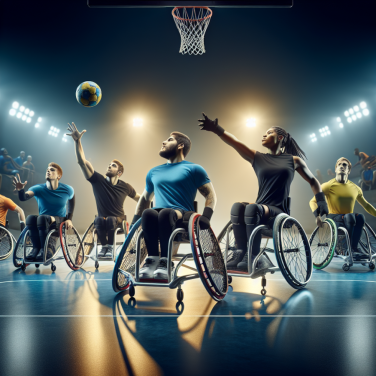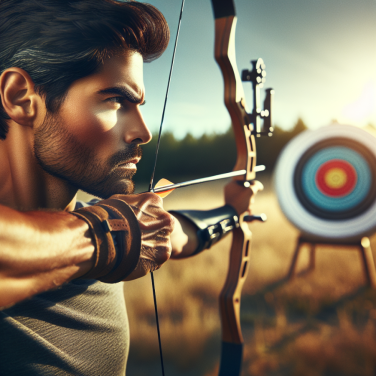The Psychological Rush: The Intense Focus Required for Precision in Archery and Shooting Sports
The exhilarating challenge in archery and shooting sports lies not merely in the physical aspects of the activities but also in the demanding mental concentration they require. The precision needed in target sports like these cannot be overstated; it is at the confluence of acute mental focus and the body's controlled finesse where success is crafted.
In the realm of archery, the archer must enter a psychological state often likened to a form of meditation. Before the string is ever drawn, the mind must be cleared of any intrusive thoughts and outer distractions. As the eyes fixate on the target, it’s as if the world shrinks down to a single point: the bullseye. The archer must then maintain this focus amidst external factors such as wind, light, and noise which threaten to disrupt their concentration. Much like a chess player who is several moves ahead, the archer must anticipate the bow's behavior, the arrow's flight, and the target's reaction—all in a fraction of a second.
Moreover, the psychological rush doesn't cease at the release of the arrow; it extends to the wait, the breath held, as the archer anticipates the arrow’s impact. The rush is palpable, a blend of careful calibration and mental resilience culminating in either the thud of success or the silence of a miss.
Similar to archery, shooting sports such as rifle or pistol shooting demand an extraordinary level of mental focus. Shooters must be able to control their breathing and heart rate to minimize any movement as they take a shot. The rush here is in the synchronization of mind and body; the shooter must wait for that perfect moment where the heartbeat falls into a lull, allowing for a steady hand and a clear shot. Precision shooting is a dance of discipline and self-awareness, where the slightest tremor or hastiness can be the difference between victory and dismay.
The focus required in these sports is so rigorous that athletes often train their minds as much as their bodies. Techniques such as visualization, where the athlete mentally rehearses their moves and visualizes success, are commonly employed. Other psychological training methods include mindfulness and other concentration-enhancing exercises designed to foster a state of flow—a mental state in which a person performing an activity is fully immersed in a feeling of energized focus, full involvement, and enjoyment.
Engaging in these target sports can have profound psychological benefits as well.
Read also:
Understanding the Legality of Driving Golf Carts on Sidewalks
Perfecting Aim: The Quest for Accuracy in Target Shooting
Perfecting one’s aim is an ongoing journey for enthusiasts and professionals in target shooting sports. Precision is paramount, and achieving it requires a combination of technical skill, mental focus, and physical control.
Technical skill starts with mastering the fundamentals of marksmanship. This includes understanding the mechanics of your firearm or bow, learning how to align your sight picture, and practicing trigger control to avoid any pulling that can throw off your shot. It's crucial to develop a consistent shooting stance, whether it's prone, kneeling, or standing. Each stance should provide a stable platform for shooting and be comfortable enough for the shooter to maintain for the necessary time.
Mental focus is equally vital in target shooting. Shooters often employ visualization techniques, imagining the perfect shot before taking it. This mental practice can enhance muscle memory and reduce anxiety. Breathing techniques also play a critical role; learning to shoot between heartbeats or during natural respiratory pauses can reduce movement and improve accuracy. Shooters often employ a routine to enter a state of calm concentration, known in sports psychology as ‘the zone,’ where they can better focus on the target and trigger execution.
Physical control involves managing every part of the body to support the shot. This includes a strong yet flexible grip, steady arm positioning, and overall body alignment that supports perfect aim. Increasing core strength can greatly enhance stability, as can exercises that improve fine motor skills and hand-eye coordination. Diet and physical fitness contribute to steadier hands and more controlled movements, while relaxation techniques can help manage the adrenaline surge that often accompanies competition.
Fine-tuning your equipment is another critical factor in the quest for accuracy. For firearms, this means regularly cleaning and maintaining your weapon, choosing the right ammunition, and ensuring that all sights or scopes are accurately calibrated. For archery, it might mean selecting the right arrows and ensuring the bow is properly strung and tuned to the shooter’s preferences.
Finally, ongoing practice is non-negotiable. Dry-firing practice helps shooters refine their skills without the cost of ammunition and the complexity of recoil management. Live-fire exercises are important too, where one can learn how to adjust for variables such as windage and elevation. Target shooting disciplines, from trap and skeet to long-range rifle shooting, each have specialized drills to improve precision.
A commitment to continuous improvement is what distinguishes exceptional shooters. From novices to Olympians, the quest for accuracy is a universal challenge.




